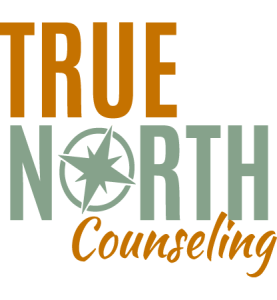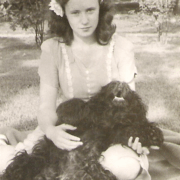How to Talk with the Dead | Healthy Aging Series: S11 E29
The Exorcist
Jeff Wilson, my high-school best friend, and I decided to go to the theater and watch The Exorcist. The movie had just come out in December of 1973. We were both seniors about to graduate. I was headed to the Air Force, he was headed to college.
Both tough guys, but 45 minutes into the movie I was scared shitless.
Jeff, on the other hand, was laughing. The difference was, I believed there were demons, and he didn’t. I was paralyzed in my seat. I wanted to leave but was too scared to walk out by myself, even to get Jujubes.
There was a particular scene when Reagan, the possessed 12-year-old girl, starts channeling Father Karras’ mother. “Why do you do this to me, Dimmy?”
Sorry, it creeped me out! Talking with the dead.
I’ve come a long way since then. My views of religion, demonology, and possession have changed dramatically.
I’ve watched the movie since, and I still get a little scared.
But my views of talking with the dead have changed.
Talking with the Dead
I talk with the dead. I don’t talk to them; I talk with them. Not every day, but a lot.
I have conversations with Mom and Dad. I’ve had conversations with other people that were important in my life.
I want to share a Fairytale and a book, both about talking with the dead, both about grief.
First, the Fairytale: The Shroud
There was once a mother who had a little boy of seven years old, who was so handsome and lovable that no one could look at him without liking him, and she herself worshipped him above everything in the world. Now it so happened that he suddenly became ill, and God took him to himself; and for this the mother could not be comforted and wept both day and night. But soon afterwards, when the child had been buried, it appeared by night in the places where it had sat and played during its life, and if the mother wept, it wept also, and when morning came it disappeared. As, however, the mother would not stop crying, it came one night, in the little white shroud in which it had been laid in its coffin, and with its wreath of flowers round its head, and stood on the bed at her feet, and said, “Oh, mother, do stop crying, or I shall never fall asleep in my coffin, for my shroud will not dry because of all thy tears, which fall upon it.” The mother was afraid when she heard that, and wept no more. The next night the child came again, and held a little light in its hand, and said, “Look, mother, my shroud is nearly dry, and I can rest in my grave.” Then the mother gave her sorrow into God’s keeping, and bore it quietly and patiently, and the child came no more, but slept in its little bed beneath the earth.
My first thought about grief is that everyone experiences it differently.
There is Normal or Uncomplicated Grief, and there is Complex or Complicated Grief.
Normal grief involves sadness, anger, and confusion, to name a few of the symptoms, but they typically subside after six months to a year.
Complicated Grief is more intense and can significantly impair a person’s ability to function, sometimes for years. Complicated Grief can be caused by an unexpected or traumatic death.
This Fairytale likely describes Complicated Grief due to the sudden loss of a child. We are told that she could not be comforted and wept day and night. We are told her child visited her by night.
One night her son comes and asks her to stop crying so he can find his rest. Her tears were preventing his shroud from drying. And so, “she wept no more.”
The next night, the child returns and announces that his shroud is nearly dry, and he can now rest. From that day forward, “she bore her sorrow quietly and patiently.” They both found rest.
Maybe the shift from complicated to uncomplicated grief came by listening to her dead child. I’m not going to suggest that this is the magic intervention that works for everyone who experiences complicated grief or the loss of a child. It’s likely that this story was told during the18th century, possibly earlier, and in a sense is timeless. In other words, being comforted by the dead is not a new experience.
This brings me to the book, “New Techniques in Grief, Therapy: Bereavement and Beyond,” Edited by Robert Neimeyer.
Neimeyer begins this wonderful resource for clinicians and lay people by stating: “We are wired for attachments in a world of impermanence.”
It is a dilemma. We want to connect, we want to have intimacy, we want to grow strong bonds with people, with pets, and with things, all to no avail, because one day they will all be gone.
“If living well implies investing ourselves in the lives of others,” Neimeyer writes, “it also implies cultivating the grace of relinquishing the concrete expression of our attachments in our world and reconstructing them in more sustainable terms as we move forward through an unending series of life transitions.”
There’s a quote that I often recite from Shawshank Redemption where Red reminds his fellow inmates that they need to get busy living or get busy dying. Maybe Neimeyer would ammend that quote to, “You need to get busy living and get busy dying.”
Life is the process of investing in the things in our lives, and at the same time slowly letting go of those things, in other words, divesting.
In his first chapter, Neimeyer provides a modified transcript of a session that he had with a woman, still in the grips of Complex Grief after the loss of her mother, 20 years earlier.
During the session, he invites his client to consider her mother as a source of support. Neimeyer describes this therapeutic process as family therapy in absentia, which involves experiencing the loved one’s death itself, making sense of it, and then, resolving any unfinished business, with the goal of restoring that relationship.
This is a slow process. During the session he asked, “I wonder if you were to meet your mother’s eyes in the moment of clear pain, what she might have to tell you about how pain can be carried from a position of strength? What message would she have for us about that?” And so, they invite her mother into the session for strength and support.
Later he describes the process of grieving as, “negotiating a change between losing what we had and then attempting to have what we lost.”
Having what we lost means experiencing the person we lost by asking questions and then listening to them.
Neimeyer prescribes writing a “Dear Mom” letter and then following it up with a “Dear Ingle” letter from Mom (the client’s name).
Grief therapy, he later explains, is inherently about the relationship between the living and the dead. It means, “Fostering the attachment security that was shattered by loss.” And, I would add it means talking with the dead.
James Hollis, in his book, “Hauntings: Dispelling the Ghost who Run Our Lives,” explains that we are all living out our parents unfulfilled Dreams.
I was looking at a picture of my mother sitting in her front yard in Terre Haute, Indiana. She was probably 16 or 17 years old. I took a moment and asked her about her unfulfilled dreams, and then I listened.
I have maintained a relationship with my mother despite her death. I was on my way to Colorado to visit family a few months ago and was hit by a surge of anxiety. Sometimes, when leaving an agency with all its clinicians, and all my clients, it can be tough to let go for 8 to 10 days. It’s a control thing.
Don’t get me wrong, our agency has wonderful leadership. My wife is the Executive Director. But you know, anxiety isn’t always rational. And so, I walked through the Muhammad Ali International Airport and talked with Mom and Dad. I listened and felt better.
I hope you see the important take away here. Don’t just talk to your loved ones, listen to them.
That’s how you talk with the dead.













